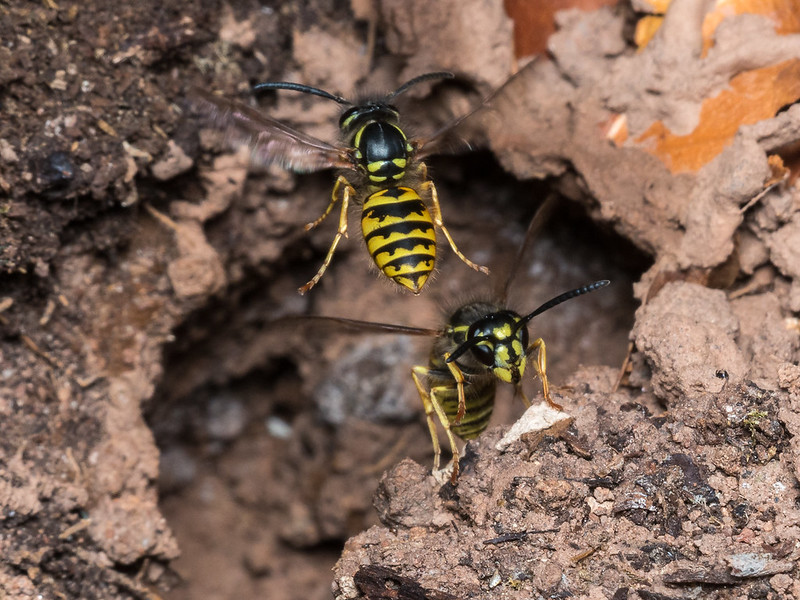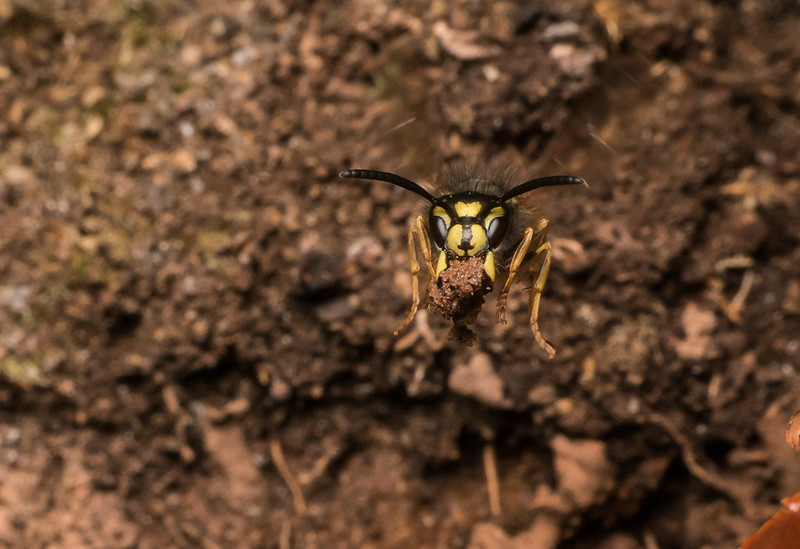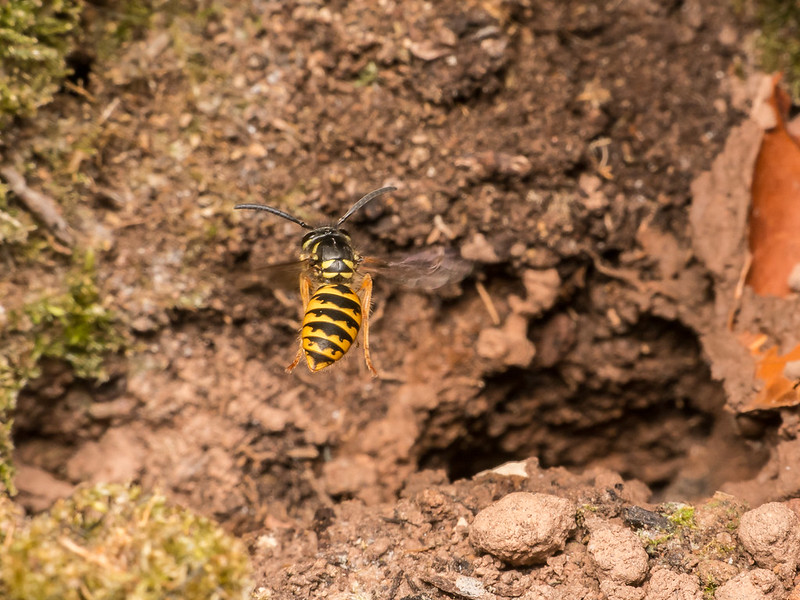Thanks for the kind comments.
You are a brave man wouldnt get me within a country mile of a wasps nest
If one takes a dislike all his mates do as well
They were not interested in me. Not that day. The next day I captured a few more shots of them. At first there was just the odd one flying in and out. But after a while I noticed that there seemed to be continuous buzzing going on around me. Not just the odd one pausing before going on its way, but several of them sticking around, buzzing around me.
I carried on for a bit, but then decided perhaps I'd done enough of that scene. It wasn't going all that well anyway (I told myself, not necessarily entirely truthfully). I backed off and went looking for other subjects.

I've tried this but found it difficult to get any good detail in the wings. Are you using manual focus on a preset distance or AF?
With these it was manual focus on a preset distance as both these Panasonic cameras use contrast detect focusing, and the older variety at that, not Panasonic's newer and allegedly extremely fast Depth From Defocus technology. If I did try autofocus with one or other of these cameras (I don't recall if I did or not) it would only have been for a very brief period. The wasps were moving really fast - too fast for autofocusing with these cameras.
I did use autofocus some of the time with the 70D for the session in
this thread. I almost always use the LCD with live view with all my cameras, but I recently discovered how fast phase detect focusing can be when I photographed some
birds in flight at a local pond using the OVF with my 70D. I have no experience photographing birds, especially not in flight, so I was fairly astonished to find it was possible, even for me. Thus enlightened, I tried the OVF some of the time during the 70D session with the wasps.
It wasn't hugely successful. Using a single point was useless -perhaps someone with much faster reactions than me could manage it, but there was no way I could get a single point over the subject and press the shutter button before it was gone. I tried using the central group of focus points, as I had with the birds, but the wasps were still much too fast for me. I ended up using all the focus points. The trouble is that the camera then tended to focus on the surroundings rather than the subject. I did get some shots that worked while using the OVF, but I don't think that was because I was using the OVF. It was just, in effect, a way of letting the camera pick a fixed point to focus on.
I think the wings move too fast to get any detail when the wasps are in flight. Like with
flies in flight and
bees in flight, I sometimes get some smudgy wing detail. I suspect you get most detail when the wing gets to a position where it is about to reverse its direction, and is momentarily still (ish).
If flash is the dominant light source then the briefness of the flash pulse will give a very fast effective shutter speed and tend to "freeze" movement (although some of the wing flight movements are I suspect too fast even for that). However, when photographing bees, wasps or flies in flight it is quite likely to be quite bright, and even though using flash, the flash may not be the overridingly dominant light source. In that case the effective shutter speed will be nearer the actual shutter speed than the length of the flash pulse, Even if you are operating at flash sync speed this will probably only be 1/250 or so (or worse, such as 1/160 sec with my G3, with a minimum ISO of 160 which makes things even worse again).
You can try getting round this by using HSS/FP flash, but I found that a very rocky road.
One of the advantages of the FZ200 is that it has a leaf shutter and can use ordinary flash with very fast shutter speeds. I used a shutter speed of 1/2500 sec (about the practical maximum) with the FZ200 for the flies and 1/2000 sec for the bees. Even with those though you'll see a variable amount of in flight wing detail, ranging from some smudgy stuff to invisible wings, all very similar to the wasps.






















